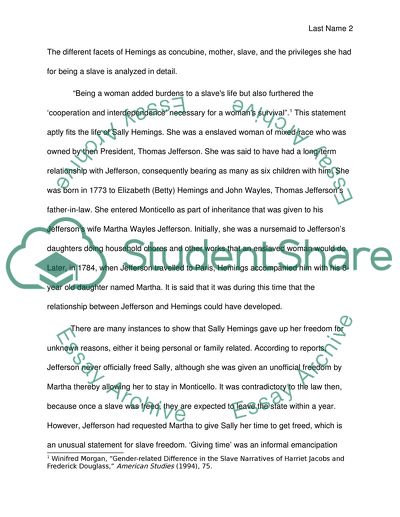Cite this document
(“Sally hemings Essay Example | Topics and Well Written Essays - 1250 words”, n.d.)
Sally hemings Essay Example | Topics and Well Written Essays - 1250 words. Retrieved from https://studentshare.org/history/1664731-sally-hemings
Sally hemings Essay Example | Topics and Well Written Essays - 1250 words. Retrieved from https://studentshare.org/history/1664731-sally-hemings
(Sally Hemings Essay Example | Topics and Well Written Essays - 1250 Words)
Sally Hemings Essay Example | Topics and Well Written Essays - 1250 Words. https://studentshare.org/history/1664731-sally-hemings.
Sally Hemings Essay Example | Topics and Well Written Essays - 1250 Words. https://studentshare.org/history/1664731-sally-hemings.
“Sally Hemings Essay Example | Topics and Well Written Essays - 1250 Words”, n.d. https://studentshare.org/history/1664731-sally-hemings.


